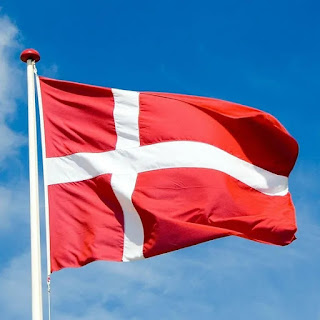Have you ever looked at a flag and wondered about the story behind its design? If so, Denmark's iconic flag, the Dannebrog, has a particularly fascinating tale to tell, shrouded in both myth and history. By the end of this blog post, exclusively crafted for you by FreeAstroScience.com, you'll gain a deeper understanding of the world's oldest continuously used national flag, and the powerful legacy it represents.
The Dannebrog: A Legacy of Symbolism
Denmark's flag, the Dannebrog, or "Danish Cloth," boasts a striking design – a simple white Scandinavian cross set against a vibrant red background. This bold design has inspired many other national flags, including those of Sweden, Norway, Finland, Iceland, and the Faroe Islands. Historians believe its cross pattern echoes the banners carried by medieval crusaders, symbolizing Denmark's Christian heritage.
A Divine Origin?
Interestingly, a captivating legend paints a different picture of the Dannebrog's origins. Tradition holds that during the Battle of Lyndanisse in 1219, a white cross miraculously appeared in the sky to King Valdemar II of Denmark. He saw this as a divine sign, rallied his troops, and seized victory against the Estonians. The Dannebrog was born, and with it, the belief that it was a symbol of heavenly providence.
Symbol of Strength and Heritage
The Dannebrog's longevity as a national symbol is truly remarkable. Since 1625, it has represented the Danish nation without interruption, making it the oldest continuously used sovereign state flag in the world. The red of the flag is often interpreted as embodying the courage of Danish soldiers and the blood spilled in battles throughout the nation's history.
Let FreeAstroScience.com Illuminate Your World of Science
This exploration of the Dannebrog is just a taste of the captivating scientific topics we uncover on FreeAstroScience.com. Our blog simplifies complex principles so you can grasp them with ease.
Let us know what scientific wonders you'd like us to dive into next!


Post a Comment